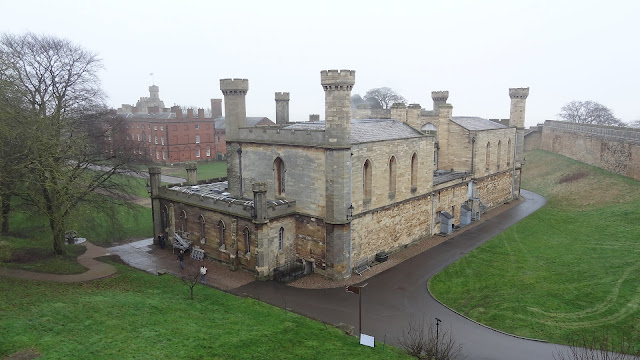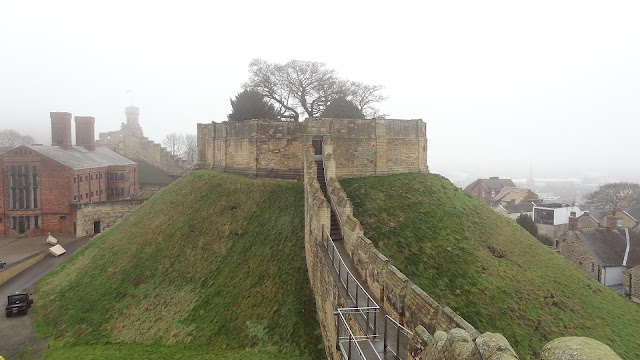Wednesday 15th January 2025.
Lincoln castle as we see it today goes back to the days of William the Conquerer, roughly a 1000 yrs old. But there has been a fortification on this site going back to the Romans and beyond. With it being a high hill it was perfect for monitoring the surrounding lands. It is also the home of an original Magna Carta, a Victorian Prison and a still working crown court.
Image Courtesy of "Lincoln Pride".
William had the castle built in 1068 because of the trouble makers from the north and to show everyone that the Normans were now in command after they won the Battle of Hastings in 1066.
The Romans built their own fortress here and the stonework from the city then named Lindum Colonia was used in the Norman wall construction. Prior to this a wooden palisade had been constructed. A stone keep was built replacing a wooden one which can be seen today called Lucy Tower. Upper left in the image above now covered with foliage.
The castle has been in the wars over the years.
In 1141 King Stephen was in a war with his cousin Matilda over the English Crown and whilst this was going on it was claimed by Ranulf, the Earl of Chester. Stephen didn't get it back for seven months. This encounter was known as "The Joust of Lincoln".
Whilst under the leadership of Nicola de la Haye, 50 yrs later, the castle withstood a 40day siege by Richard 1st's chancellor, Longchamps, when he demanded the loyalty of supporters of the kings younger brother, Price John.
Nicola de la Haye was quite some lady, she was a wealthy landowner and administrator who had inherited it lands in England and Normandy from her father, Richard de la Haie. She inherited the title of Constable of Lincoln Castle.
She defended the castle once again in 1217, during a civil war caused because King John wouldn't honour the Magna Carta in 1215.
Rebel barons and the French forces allied to Prince Louis seized control of much territory including Lincoln town. However the castle was a Royalist stronghold guided by Nicole de la Haye and held out. If the Royalists had lost then England could have become ruled by the French.
The last battle was in 1644 where the Royalists were defeated by the Parliamentarians during the English Civil War.
Weather wise the day was forecast to be deteriorating so we opted to do the castle walls walk while it was still reasonable. We bought our tickets and made our way through the electric turnstiles and up the many steps of the large spiral staircase leading to the wall.
Once on the wall we headed in an anticlockwise direction, the first point of interest being Cob Hall.
Cob Hall was a defensive tower in the North East quarter. Built round to deflect barrages. You can enter the "hall" via steep steps and even further into the dungeon cellars. The walls of the dungeons have graffiti scratched into them from prisoners. The arched ceilings suggest that it was possibly used as a chapel as well. From 1817 until 1859, 38 hangings took place on the roof with vast 15,000 crowd watching.













No comments:
Post a Comment